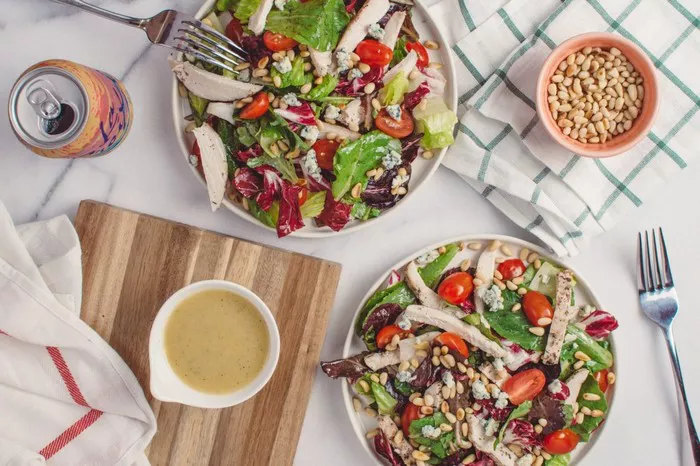In a world flooded with countless diet trends and weight loss strategies, finding a sustainable and effective approach can feel like a daunting task. Amidst the sea of information, a common desire emerges – the search for the easiest diet to follow to lose weight. This pursuit is not just about shedding pounds; it’s about embracing a healthier lifestyle that seamlessly integrates into our daily routines. In this article, we delve into the realm of simplicity, exploring the principles and strategies that make up the easiest diet for weight loss, empowering you to embark on a journey of health and well-being.
The Quest for Simplicity: Why Easier is Better
The notion of “easy” in the context of dieting doesn’t imply shortcuts or magic solutions. Instead, it centers around practicality, sustainability, and a realistic approach to making healthier choices. The reason why an easier diet is often more successful lies in its alignment with our natural habits and preferences. When a diet is overly restrictive or complicated, it can become challenging to maintain, leading to frustration and a cycle of on-and-off attempts. An easier diet, on the other hand, sets the stage for consistency, making it more likely to yield lasting results.
The Power of Mindful Eating: Embracing Intuitive Eating
At the heart of the easiest diet for weight loss lies the concept of intuitive eating. Intuitive eating emphasizes listening to your body’s signals and responding to its cues, such as hunger and fullness. This approach contrasts with rigid meal plans and calorie counting, allowing you to develop a healthier relationship with food. Here’s how to embrace intuitive eating:
Eat When Hungry: Pay attention to your body’s hunger signals and eat when you feel genuinely hungry. Avoid eating out of boredom, stress, or external triggers.
Stop When Satisfied: Recognize the sensation of fullness and stop eating when you feel comfortably satisfied, rather than overly full.
Enjoy a Variety: Choose a diverse range of nutrient-rich foods that provide a mix of vitamins, minerals, and essential nutrients.
Mindful Eating: Savor each bite, eat slowly, and engage your senses to fully experience the flavors and textures of your meals.
Eliminate Guilt: Banish guilt associated with indulgent treats. Allow yourself occasional pleasures without judgment or restrictions.
The Balanced Plate: Prioritizing Nutrient-Dense Foods
An essential component of the easiest diet for weight loss is focusing on nutrient-dense foods. These foods are rich in vitamins, minerals, fiber, and antioxidants, providing nourishment that supports your overall health and weight loss goals. Here’s how to build a balanced plate:
Vegetables: Fill half of your plate with a colorful array of vegetables. They are low in calories and high in fiber, promoting satiety and aiding digestion.
Lean Proteins: Include lean protein sources such as chicken, turkey, fish, beans, lentils, tofu, and Greek yogurt. Protein helps control appetite and supports muscle maintenance.
Whole Grains: Opt for whole grains like brown rice, quinoa, whole wheat, and oats. They offer sustained energy and a steady release of glucose into the bloodstream.
Healthy Fats: Incorporate sources of healthy fats such as avocados, nuts, seeds, and olive oil. These fats contribute to satiety and support various bodily functions.
Portion Control: Mindful Serving Sizes
Portion control is a key factor in managing calorie intake and promoting weight loss. While the easiest diet doesn’t involve meticulously measuring every morsel, being mindful of portion sizes is crucial. Here’s how to practice portion control without feeling deprived:
Use Your Hands: Use your hand as a simple guide. For protein, aim for a palm-sized portion. For carbohydrates, a clenched fist is a good reference. Fill the remaining space on your plate with vegetables and a thumb-sized portion of healthy fats.
Practice Mindful Eating: Eat slowly and savor each bite. This allows your body to recognize fullness more accurately, preventing overeating.
Listen to Your Body: Tune into your body’s signals of hunger and fullness. Eat until you’re satisfied, not until you’re uncomfortably full.
Hydration and Its Impact on Weight Loss
Staying hydrated is often overlooked but plays a vital role in weight loss and overall well-being. Drinking water supports digestion, reduces the likelihood of confusing thirst with hunger, and aids in maintaining energy levels. Make hydration a priority:
Drink Water Regularly: Carry a water bottle with you and sip water throughout the day. Aim for at least eight glasses of water a day, adjusting based on your individual needs.
Start with Water: Begin your meals with a glass of water. This can help you feel more satisfied and prevent overeating.
Mindful Snacking: Navigating Between Meals
Snacking doesn’t have to be complicated or detrimental to weight loss. Mindful snacking can keep your energy levels steady and prevent overeating during meals. Choose snacks that provide a balance of nutrients:
Pair Protein with Fiber: Opt for snacks that combine protein and fiber to keep you satisfied. For example, apple slices with a small amount of peanut butter or Greek yogurt with berries.
Avoid Highly Processed Snacks: Minimize consumption of sugary and highly processed snacks that offer little nutritional value.
Portion-Controlled Snacks: Pre-portion snacks to avoid mindless overeating. This can prevent consuming excess calories between meals.
Incorporating Physical Activity: A Holistic Approach
While nutrition plays a significant role in weight loss, incorporating physical activity is essential for a holistic approach to health. Engaging in regular exercise not only aids in weight management but also supports cardiovascular health, muscle strength, and overall well-being.
Find Enjoyable Activities: Choose physical activities that you enjoy, whether it’s brisk walking, dancing, swimming, or practicing yoga.
Make Movement Part of Your Routine: Incorporate movement into your daily routine by taking the stairs, going for short walks, or performing stretches throughout the day.
Prioritize Consistency: Aim for at least 150 minutes of moderate-intensity aerobic activity or 75 minutes of vigorous-intensity aerobic activity each week, along with muscle-strengthening exercises on two or more days.
The Role of Mindset: Cultivating Positive Habits
Adopting the easiest diet for weight loss goes beyond meal choices; it involves cultivating a positive mindset and creating sustainable habits. Here’s how to foster a healthy mindset:
Set Realistic Goals: Define achievable and realistic weight loss goals. Avoid aiming for rapid results, as gradual progress is more sustainable.
Celebrate Non-Scale Victories: Focus on non-scale victories such as increased energy, improved mood, better sleep, and enhanced fitness.
Practice Self-Compassion: Be kind to yourself and acknowledge that setbacks are a natural part of any journey. Avoid self-criticism and embrace self-compassion.
Stay Patient: Weight loss is a gradual process that requires patience and perseverance. Embrace small changes and focus on long-term well-being.
The Long-Term Approach: Sustainable Success
The easiest diet for weight loss is one that supports your overall health and can be maintained over the long term. Avoid the allure of fad diets that promise quick fixes but often lead to disappointment and frustration. Instead, focus on making sustainable choices that align with your lifestyle and preferences. Remember that weight loss is just one aspect of your health journey, and the ultimate goal is to enhance your well-being, cultivate healthy habits, and achieve balance in all areas of life.
Conclusion
The journey to weight loss doesn’t have to be complicated, overwhelming, or filled with deprivation. Embracing the easiest diet for weight loss involves prioritizing nutrient-dense foods, practicing mindful eating, staying hydrated, incorporating physical activity, and cultivating a positive mindset. This approach aligns with your natural tendencies, making it easier to maintain and enjoy a healthier lifestyle. As you embark on this journey, remember that simplicity is your ally, empowering you to achieve sustainable success and embrace a lifestyle that supports your overall well-being.



























